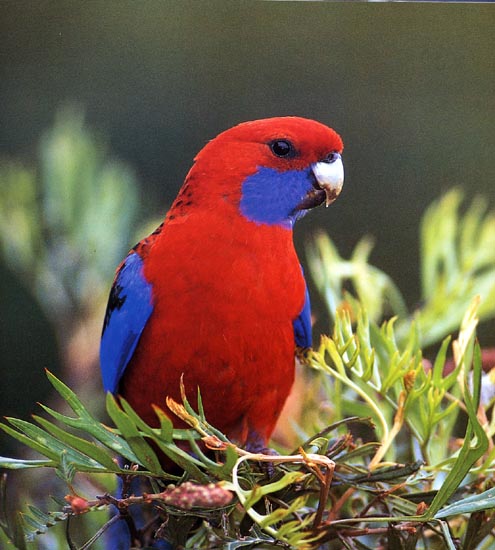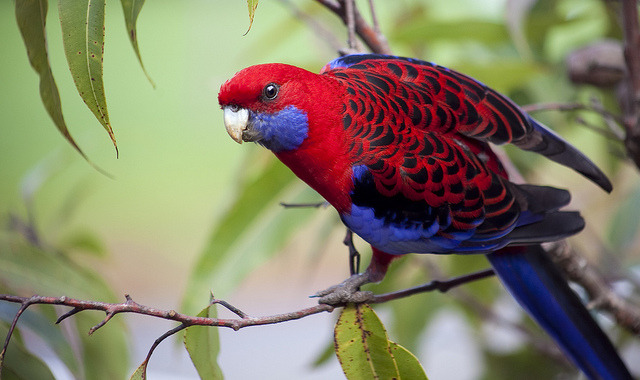Common Rosella Biography








There are several colour forms of the Crimson Rosella. The form it is named for has mostly crimson (red) plumage and bright blue cheeks. The feathers of the back and wing coverts are black broadly edged with red. The flight feathers of the wings have broad blue edges and the tail is blue above and pale blue below and on the outer feathers. Birds from northern Queensland are generally smaller and darker than southern birds. The 'Yellow Rosella' has the crimson areas replaced with light yellow and the tail more greenish. The 'Adelaide Rosella' is intermediate in colour, ranging from yellow with a reddish wash to dark orange. Otherwise, all the forms are similar in pattern. Young Crimson Rosellas have the characteristic blue cheeks, but the remainder of the body plumage is green-olive to yellowish olive (occasionally red in some areas). The young bird gradually attains the adult plumage over a period of 15 months.
The adult Crimson Rosella is similar to male Australian King-Parrots, but differs by having blue cheeks, shoulders, and tail, a whitish, rather than red, bill and a dark eye. Immature Crimson Rosellas also differ from female and immature King-Parrots by having blue cheeks, a whitish bill and a more yellow-green rather than dark green coloring.
There are several populations of the Crimson Rosella. Red (crimson) birds occur in northern Queensland, in southern Queensland to south-eastern South Australia and on Kangaroo Island. Orange birds are restricted to the Flinders Ranges region of South Australia, while yellow ones are found along the Murray, Murrumbidgee and neighbouring rivers (where yellow birds meet red birds they hybridise, producing orange offspring). Red birds have been introduced to Norfolk Island and New Zealand.
Throughout its range, the Crimson Rosella is commonly associated with tall eucalypt and wetter forests.
Crimson Rosellas are normally encountered in small flocks and are easily attracted to garden seed trays. Once familiar with humans, they will accept hand held food. Natural foods include seeds of eucalypts, grasses and shrubs, as well as insects and some tree blossoms.
The Crimson Rosella's nest is a tree hollow, located high in a tree, and lined with wood shavings and dust. The female alone incubates the white eggs, but both sexes care for the young. The chicks remain dependent on their parents for a further 35 days after leaving the nest.
Crimson Rosella

Crimson Rosella

Crimson Rosella

Crimson Rosella

Crimson Rosella

Crimson Rosella

Crimson Rosella

Crimson Rosella

Crimson Rosella
Crimson Rosella Chirping
Exotic Birds-Crimson Rosella
No comments:
Post a Comment